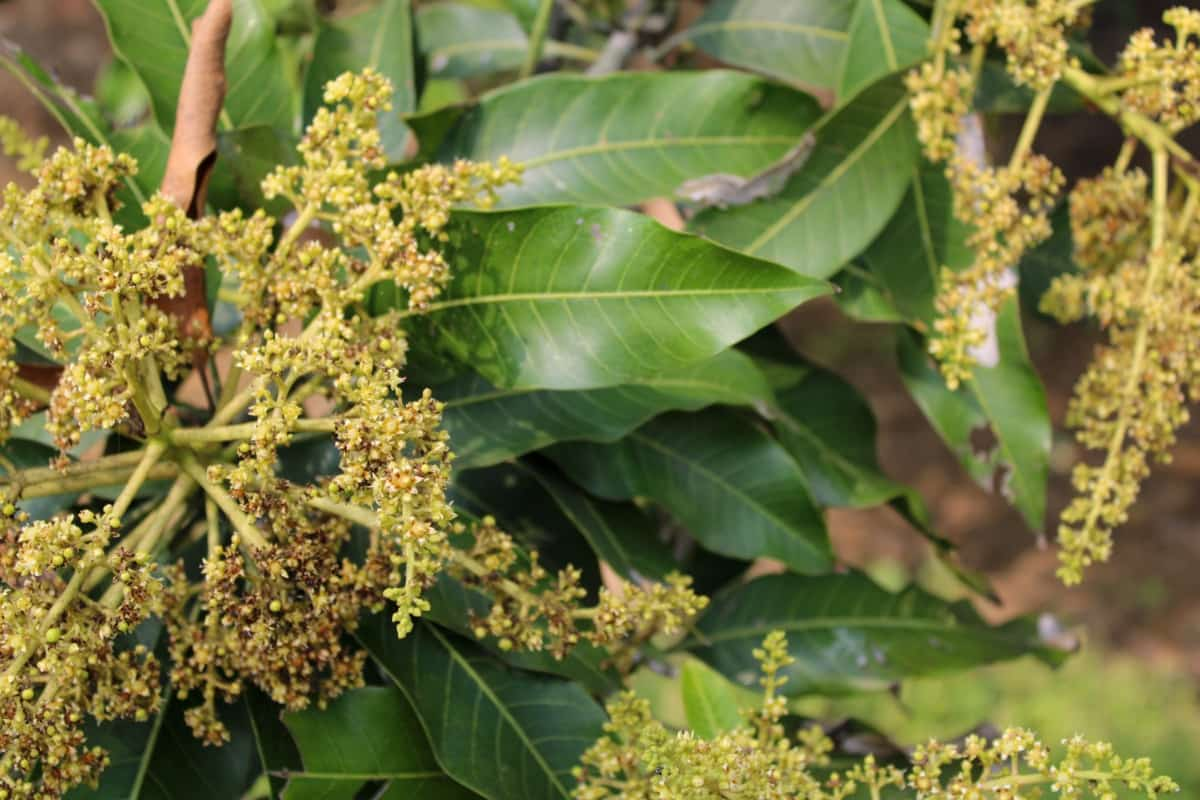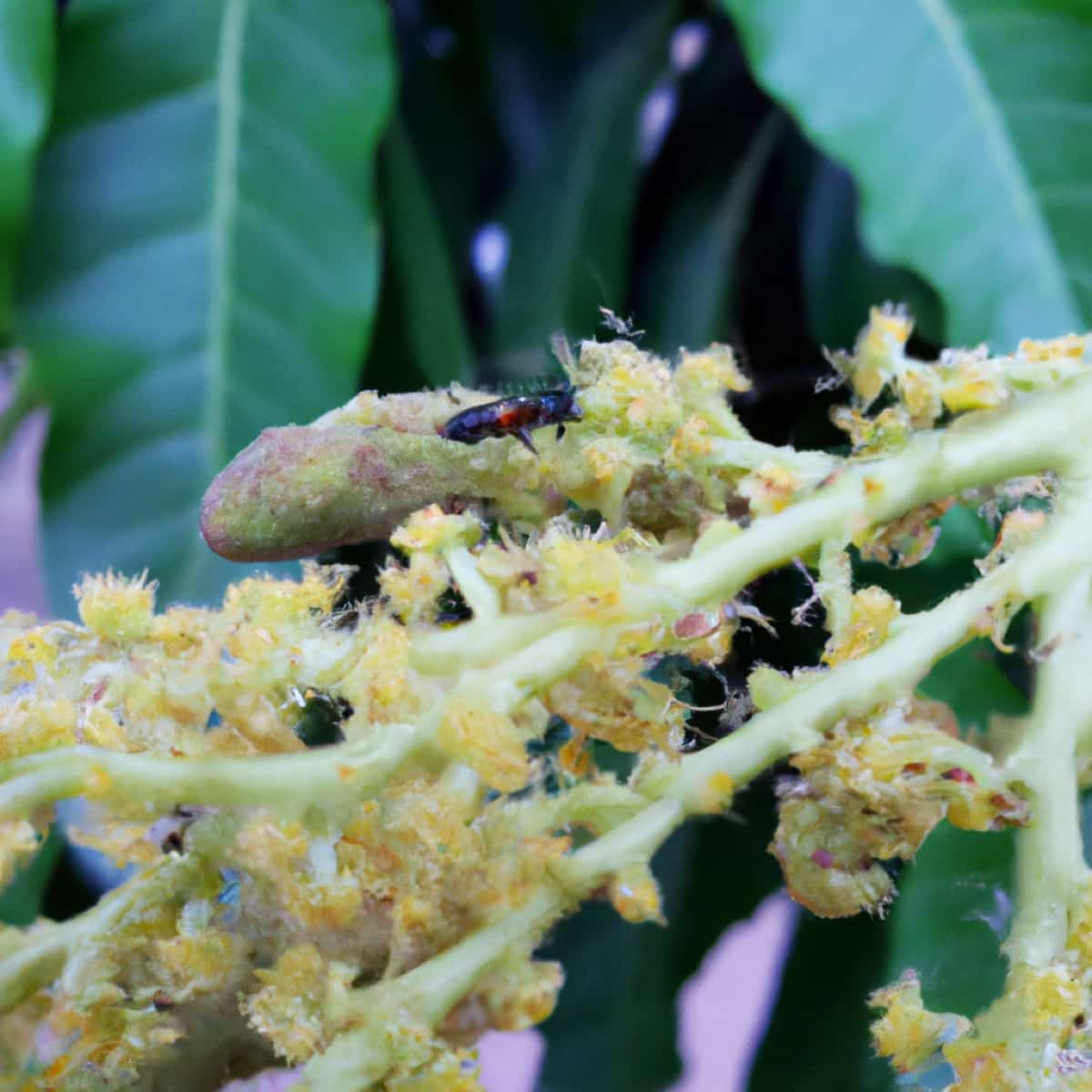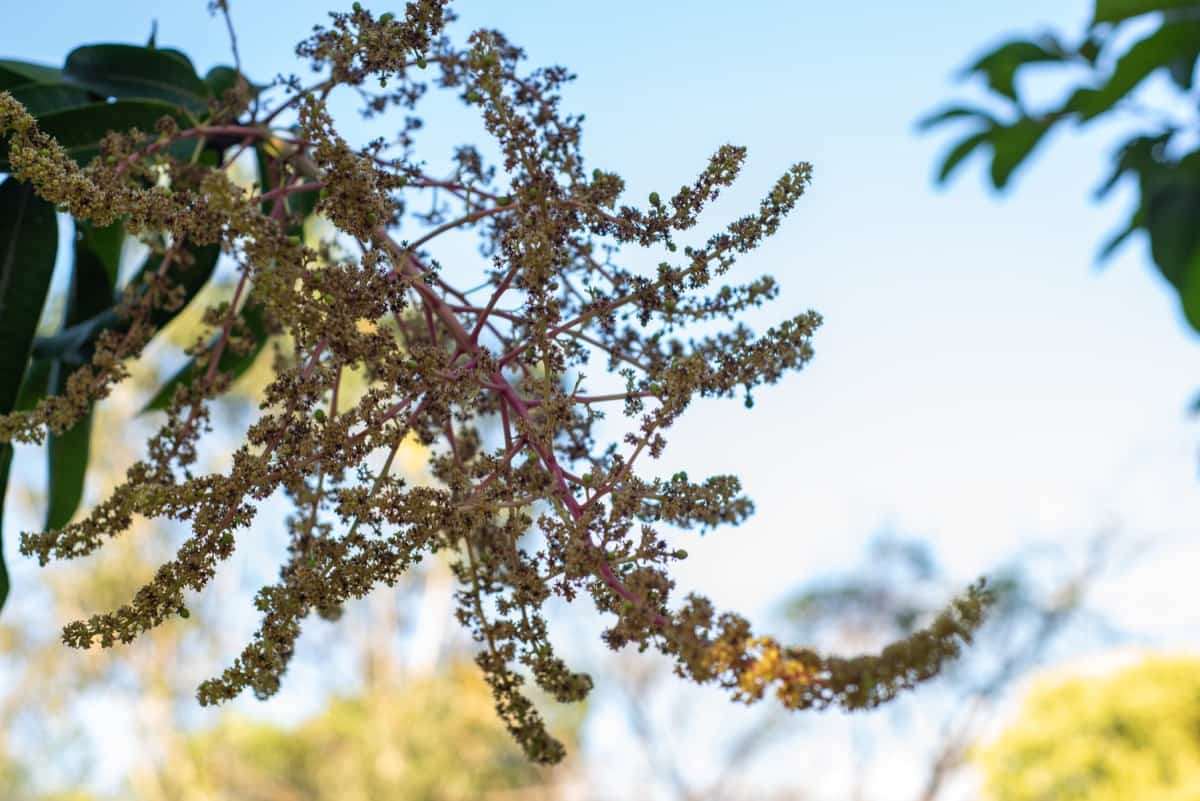The Mango Flower Webber, Eublemma versicolor, belonging to the Family Noctuidae of the Order Lepidoptera, is a well-known polyphagous moth species. The female moth lays eggs in the flowers of mango trees, and the caterpillars feed on the flowers, buds, and leaves. This can cause severe damage to mango crops, as the larvae can quickly defoliate entire trees. In addition to feeding on the mango flowers and foliage, the larvae can also affect the fruit, causing small brown spots on the surface of the fruit.

The Mango Flower Webber serves as a vector for various diseases and viruses. This can reduce the quality and marketability of the mango fruit. To effectively manage this pest, it is important to understand its life cycle, its preferred habitats, and the best methods for controlling it. This article will provide an overview and discussion of the Mango Flower Webber Pest in Mango crops, including its symptoms, identification techniques, and control.
Mango Flower Webber Pest Management
Life Cycle of Mango Flower Webber Pest in Mango Crop
The life cycle of the mango flower webber pest has four stages. They are egg, larva, pupa, and adult. The pest’s life cycle begins with the female Mango Flower Webber Pest laying her eggs on the underside of the mango flower. And they hatch after a few days. After hatching, the larvae feed on the petals and stamens of the mango flower. They also feed on the nectar produced by the flower. The larvae feed for a few weeks and then molt into the pupa stage. During the pupal stage, the larvae form a cocoon, where they remain until they emerge as adults.
In the pupal stage, the larvae are inactive and do not feed. This stage usually lasts for a few weeks. Once the larvae emerge as adults, they mate, and the females lay their eggs on the underside of the mango flower. The adult moth lives for about two weeks and then dies. The entire lifecycle of the Mango Flower Webber Pest takes about two months from egg to adult. The larvae and adult pests feed on the mango flowers, causing them to become deformed and providing an opening for fungal and bacterial diseases.
Occurrence of Mango Flower Webber Pest in Mango Crop
- Location of Mango Flower Webber pest: This pest infests mango crops in India, Africa, the United States, Mexico, Colombia, Indonesia, Malaysia, the Philippines, Thailand, Vietnam, and Cambodia.
- Host range: The mango flower webber pest infects crops like mango, guava, custard apple, cashew, sapota, avocado, and papaya.
Factors Favoring the Population Increase of Mango Flower Webber Pest in Mango Crop
- The pest prefers to live in warm and humid conditions, and mango crops often provide these conditions.
- The presence of other pests, like aphids, also attracts the webber pest as they provide an additional food source.
- Due to habitat destruction and overuse of pesticides, natural predators, such as spiders, birds, and lizards, are often absent in mango crops.
Identification of Mango Flower Webber Pest in Mango Crop
- Eggs: The eggs are small, reddish, and hemispherical.
- Larvae: The caterpillars are smooth, greenish-yellow, with a brown head and a prothoracic shield.
- Pupa: The pupae are encased in a brown, silken cocoon and are about 12 mm long.
- Adults: The adult is a small, dark brown moth with a distinctive white line running down its back and a wingspan of about 2 cm. Their wings are purplish pink or light orange.
Damage Symptoms of Mango Flower Webber Pest in Mango Crop
- The caterpillars create a silk-lined web gallery enclosing the flowers in the inflorescence and feed from inside.
- They create boreholes in the stalk of the inflorescence from the inside.
- The caterpillars feed on the buds and petals of flowers, leaving holes in the petals and reducing the number of pollinated flowers.
- They also feed on the fruits, leaving spots and scars on the surface of the fruit, causing premature fruit drop and often making them unmarketable.
- The pest also feeds on the nectar and petals of the flowers leading to the wilting and discoloration of the petals and stamens.
In case you missed it: Leaf Webber Pest Management in Mango: Symptoms, Treatment, Chemical, Biological, Natural, and Organic Control

Percentage of Yield Loss in Mango due to Mango Flower Webber Pest
- In India, the yield losses due to mango flower webber pests range from 20-50%. In Bangladesh, the percentage of yield loss is around 30%. In Sri Lanka, it is at 40%. In China, Thailand, and Malaysia, the losses are around 20%. In the United States, the losses are 5-7%. In Mexico and Brazil, it is 5-10% and 5-15%, respectively. In Africa, it ranges between 10-20%. In Australia, it ranges between 5-10%. In Indonesia, the yield losses are 10%. In the Philippines, it is 15%.
- The Economic Threshold Level (ETL) for the mango flower webber pest is set at five larvae per tree.
Cultural Control of Mango Flower Webber Pest in Mango Crop
- Remove any grass and weeds near the tree as they provide hiding places for the pests.
- Pruning the tree and removing any dead branches or leaves can help reduce the number of webbing sites available to the pest.
- By rotating the crops, the pests cannot become established in the area and can be greatly reduced.
Biological Control of Mango Flower Webber Pest in Mango Crop
- Natural predators of the pest, such as ladybugs and lacewings, can control the pest.
- Parasitoid wasps Euplectrus and Aenas parasitize the caterpillars and can help to reduce their numbers.
- Parasitoid wasp, Eupelmus vesicular, and Parasitoid fly, Eupelmus bicolor, effectively control the pest, as they feed on the eggs, larvae, and pupae of the pest.
Chemical Control of Mango Flower Webber Pest in Mango Crop
- Spray Carbaryl, Dimethoate, Cypermethrin, Chlorpyriphos, or Phosalone on the tree’s inflorescence to control the pest populations.
- These chemicals are applied as foliar application using a knapsack sprayer.
Organic Control of Mango Flower Webber Pest in Mango Crop
- Use pheromone traps to attract and trap the adult moths of the pest. This method is particularly effective at controlling the pest in its early life cycle stages before it feeds on the mango fruits and leaves.
- Intercropping involves planting multiple crops in the same area, creating a stable and diverse environment less attractive to the pest.
- Neem oil can be used on the foliage of mango trees to repel the pest.
Preventive Measures for Control of Mango Flower Webber Pest in Mango Crop
- Monitor the crops regularly to identify pest infestation early and take necessary control measures.
- Early harvesting and Pruning of the mango trees can help reduce the pest population. This helps reduce crop damage, as the pest has fewer resources to feed on.
- Prefer resistant varieties that are less attractive to the pest; this can reduce the impact of the pest on the crops.
In case you missed it: Bark Borer Pest Management in Mango: Symptoms, Treatment, Chemical, Biological, Natural, and Organic Control

Conclusion
The Mango Flower Webber Pest, Eublemma versicolor, is a major threat to mango crops in many parts of the world. It can cause significant damage to the mango tree’s fruit and leaves, resulting in reduced yields and quality. An integrated pest management approach is the best way to manage this pest effectively. This involves using cultural, biological, and chemical control measures to reduce its population and impact on mango crops.
- Beneficial Insects in Pest Management
- Natural Solutions for Pest Control in Flower Gardens
- Types of Fungicides Used in Agriculture
- Common Issues in the Fruit Development Stage of Pomegranate Farming
- Fruit Development Issues in Papaya: Easy Solutions and Treatment
- Soil-Borne Diseases and How to Protect Your Plants
- Practices to Prevent Disease Spread in the Garden
- From Wilted to Thriving: How to Treat Root Rot Naturally in Houseplants
- Natural Remedies to Cure Brown Spots on Fig Tree Leaves